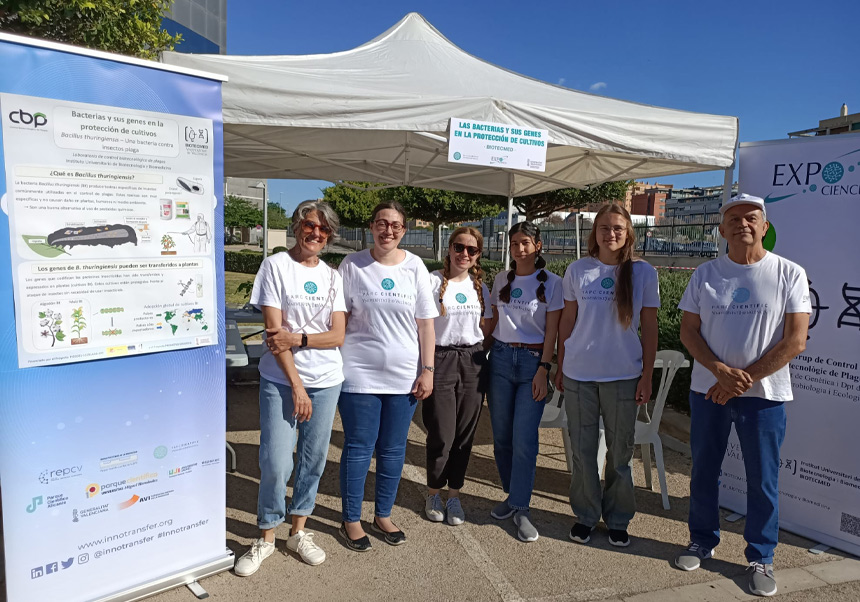Specific objective 1. Structural and functional analysis of the Vip3 family proteins
Results have shown the crucial role of the α1 helix from Domain 1 for the insecticidal activity and the maintenance of the folding of this domain in the protoxin structure. We have found the reason why Domains 4 and 5 (C-terminal) are needed for the toxicity of Vip3A proteins: getting rid of said domains prevents the structural change of Domain 1, needed for the insecticidal activity. We have also noted that the presence of domains 1 through 3 is essential for the binding to membrane receptors and that domains 4 and 5 are not involved in this binding.
Using the immuno-precipitation strategy with magnetic spheres covalently bound to the anit-Vip3Aa antibody, we managed to isolate potential recipient molecules for the Vip3Aa proteins. We are currently trying to validate these results in vivo with the gene silencing of these two molecules using the CRISPR technique.
Specific objective 2. Study of the action mechanism of new Cry proteins
We have cloned and sequenced 6 B. thuringiensis proteins, which, after expressing them, we have analysed their effectiveness against lepidopteran and coleopteran pests.
The studies have been focused on the study of the Cry1Ia action mechanism. The activation produces a loss on domain 1, extremely relevant in the production of the toxic effect. We detected that the active form losses effectiveness in the oligomerisation.
The intermediate transition fragments in the activation of the Cry1Ia protein in Lepidoptera showed a retention of the toxic activity similar to the protoxin. However, these fragments did not hold the toxicity against the potato bug. These results suggest a different action mechanism in Lepidoptera and Coleopteran, since for each insect type a different fragment will be needed to achieve the activity.
Specific objective 3. New knowledge about the Cry protein modus operandi
We have described the synergy between the crystals produced by the HD1 strain of the B. thuringiensis and the Vip3Aa protein, showing evidence of the presence of the Vip3A protein on this strain spore.
It has been observed that the synergism due to the cadherin receptors and its fragments depends on the species of insect being evaluated.
Sub-lethal doses of Cry1Ab exposure to Spodoptera exigua larvae didn’t produce an adaptation to said toxin, so we can conclude that the application of sub-lethal doses of the field doesn’t provoke a reduction on the products efficiency.
Specific objective 4. Analysis of the basis of the resistance to the Cry and Vip3 proteins
We have analysed resistant strains, obtained at the laboratory, from the strinia furnacalis, Trichoplusia ni, Sesamia nonagrioides and Mythimna separata species. In all these cases, the resistance to the Cry1 family proteins was due to the lack of union between the receptor and the membrane, while the resistance to the Vip3Aa didn’t, its cause remaining unknown.
.png)











